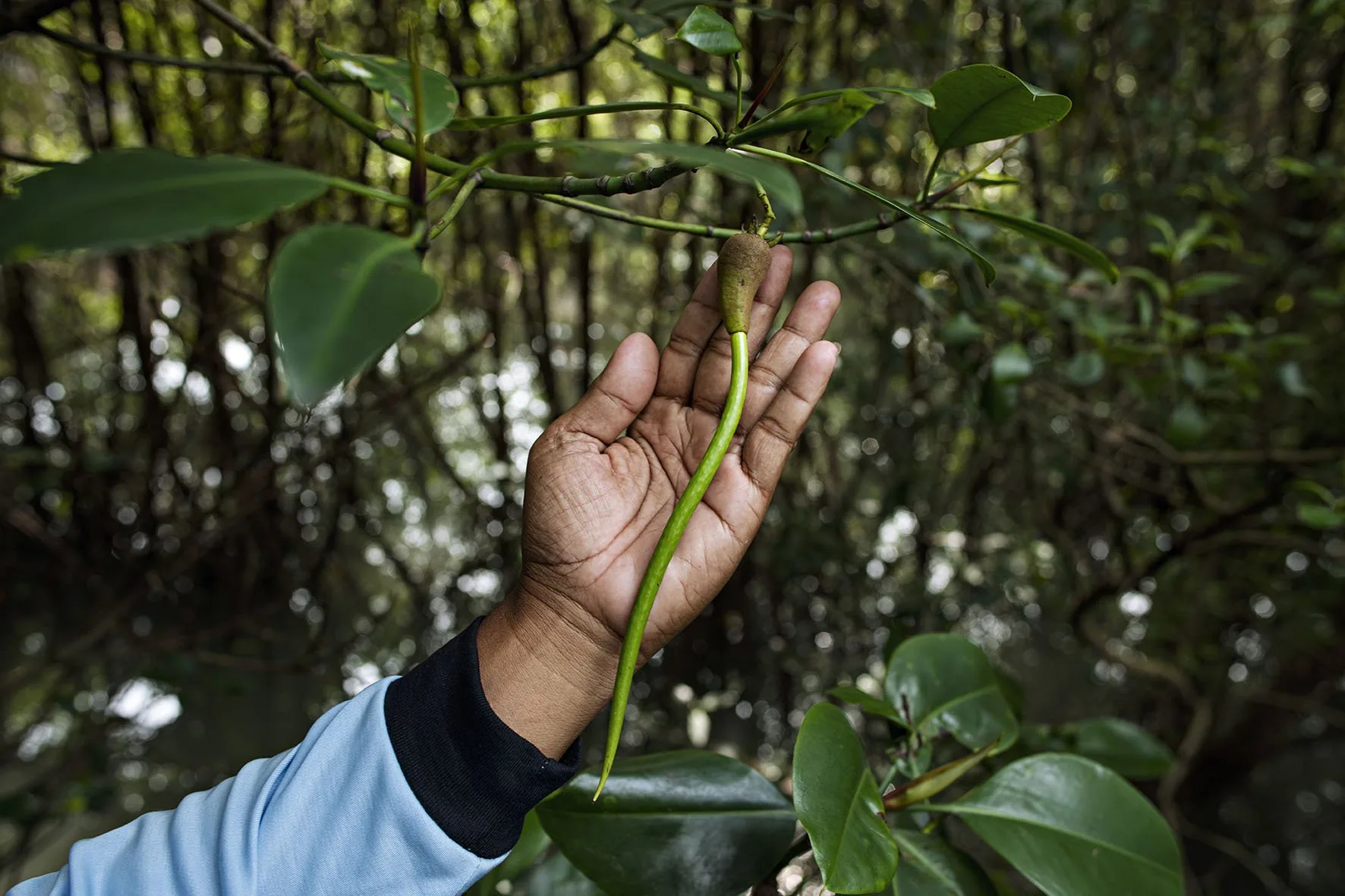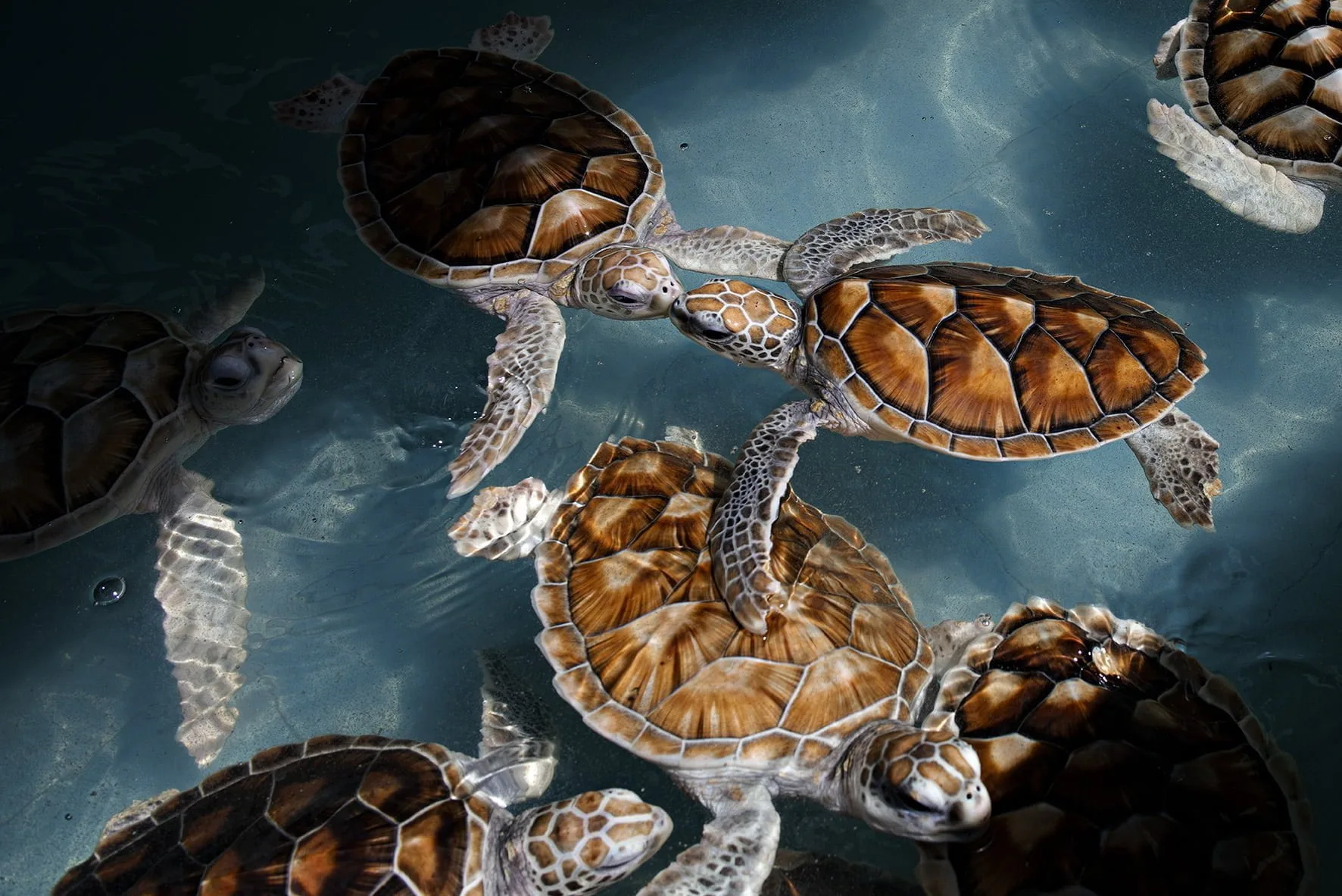Oceans and coasts are vital allies in the fight against climate change. In this photo series Giacomo d’Orlando explores how to ensure that man and nature can live in harmony in coastal areas, to the benefit of both.
Today more than 3 billion people rely on marine ecosystems for their livelihoods. In biology such a close, long-term relationship between species is called symbiosis – a clever natural equilibrium that is often mutually beneficial to both. But what happens when this balance is disrupted? Amid a changing climate, with warming seas and industrial-scale overfishing, how can coastal communities protect the waters that have always provided for them – so all can thrive?
These are questions photographer Giacomo d’Orlando explores in Symbiosis, a multi-year project bringing modern environmental perils and solutions into focus, starting with sea turtles (main image). Sea turtles are among the most impacted marine species by climate change. Sea level rise and stronger storms are eroding their beach habitats, and higher nesting temperatures are leading to the birth of more females and fewer males. In Thailand, the Royal Navy is helping to monitor and breed hawksbill and green turtles in conservation centres across the country.
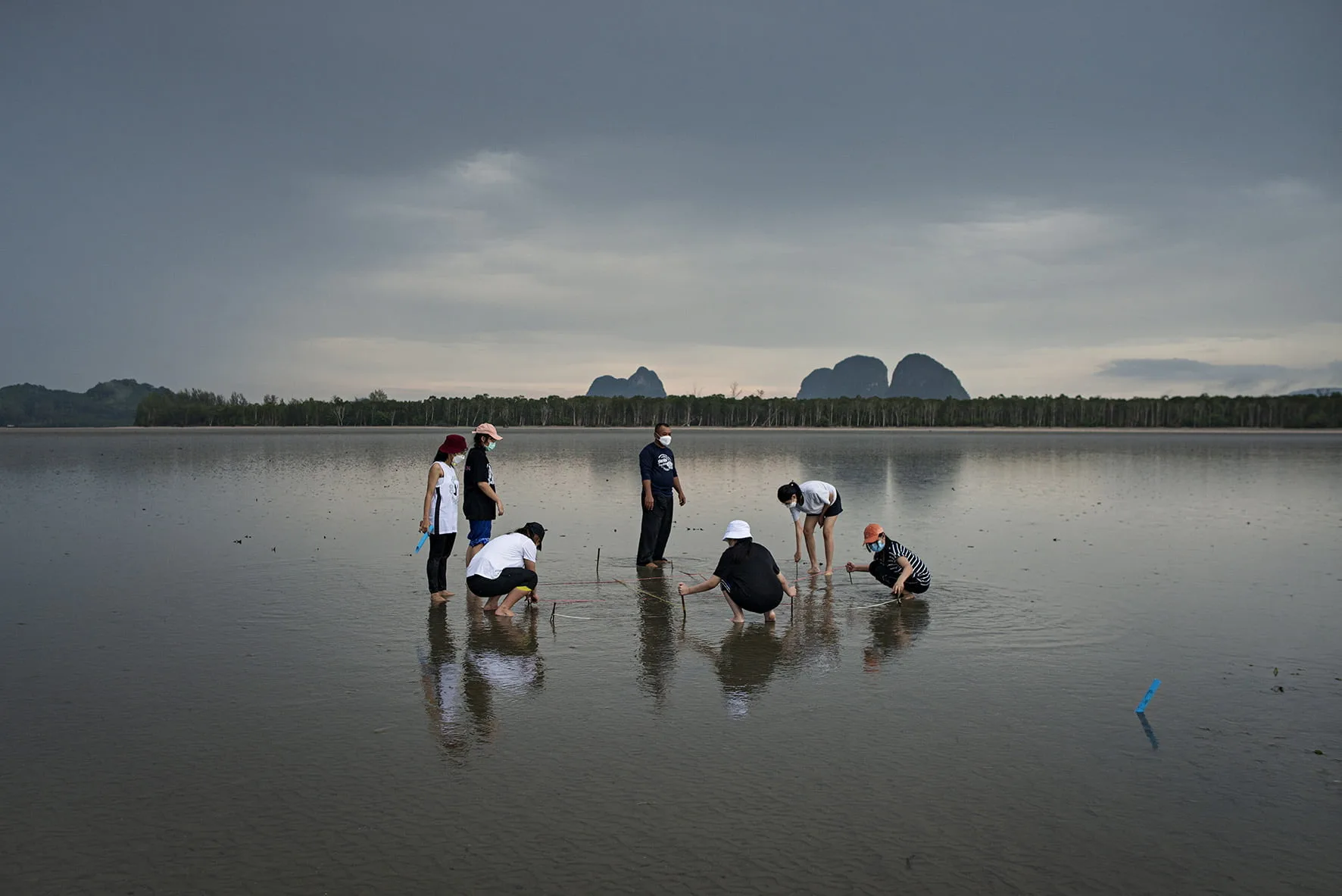
The local Trang community transplant seagrass in Sikao Bay, Thailand. The project began in 2004 after a severe storm hit the coast and destroyed a large part of the seabed. The acidity and oxygen levels of the water began to change, resulting in a loss of biodiversity. Thanks to continuous efforts by the local community the sea grass has taken root and the ecosystem has slowly recovered, with a noticeable increase in the number of fish.

A villager goes in search of shellfish during the low tide in the southern bay of Koh Libong, Thailand. Severe storms have changed the sea bed and the sea grass has stopped growing naturally, severely impacting the marine ecosystem. These sea beds are vital collecting grounds for local families who can’t afford long-tail boats to go fishing in deeper waters. Today it’s getting harder to find the shellfish they rely on.

A man herding his goats amid severe flooding. Dealing with these changing circumstances is an ongoing challenge. Life carries on for these coastal communities, but how long can they continue?
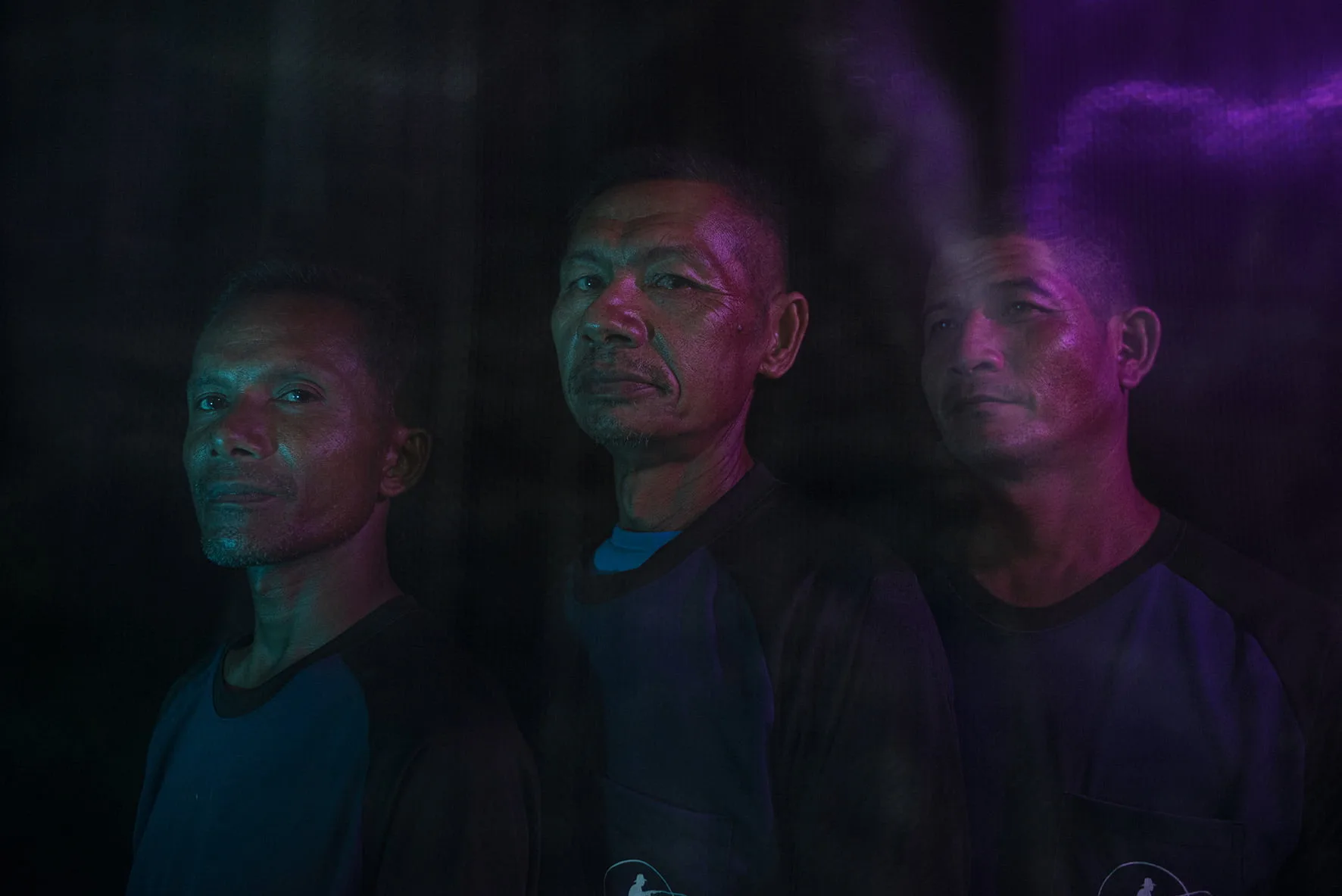
In recent years, fishing with trawl nets and dynamite in the Gulf of Thailand has destroyed large parts of the reefs, and decimated fish populations. Realising that their ability to continue fishing in future was under threat, local fishermen like Tanawat, Narong and Atid from Yau Bay have returned to more traditional and sustainable methods such as going out on long-tail boats and only using hand nets. The catch is not comparable to what it once was, but they are able to sustain their families by working with nearby slow food restaurants. Big fishing boats have now been banned from the bay.
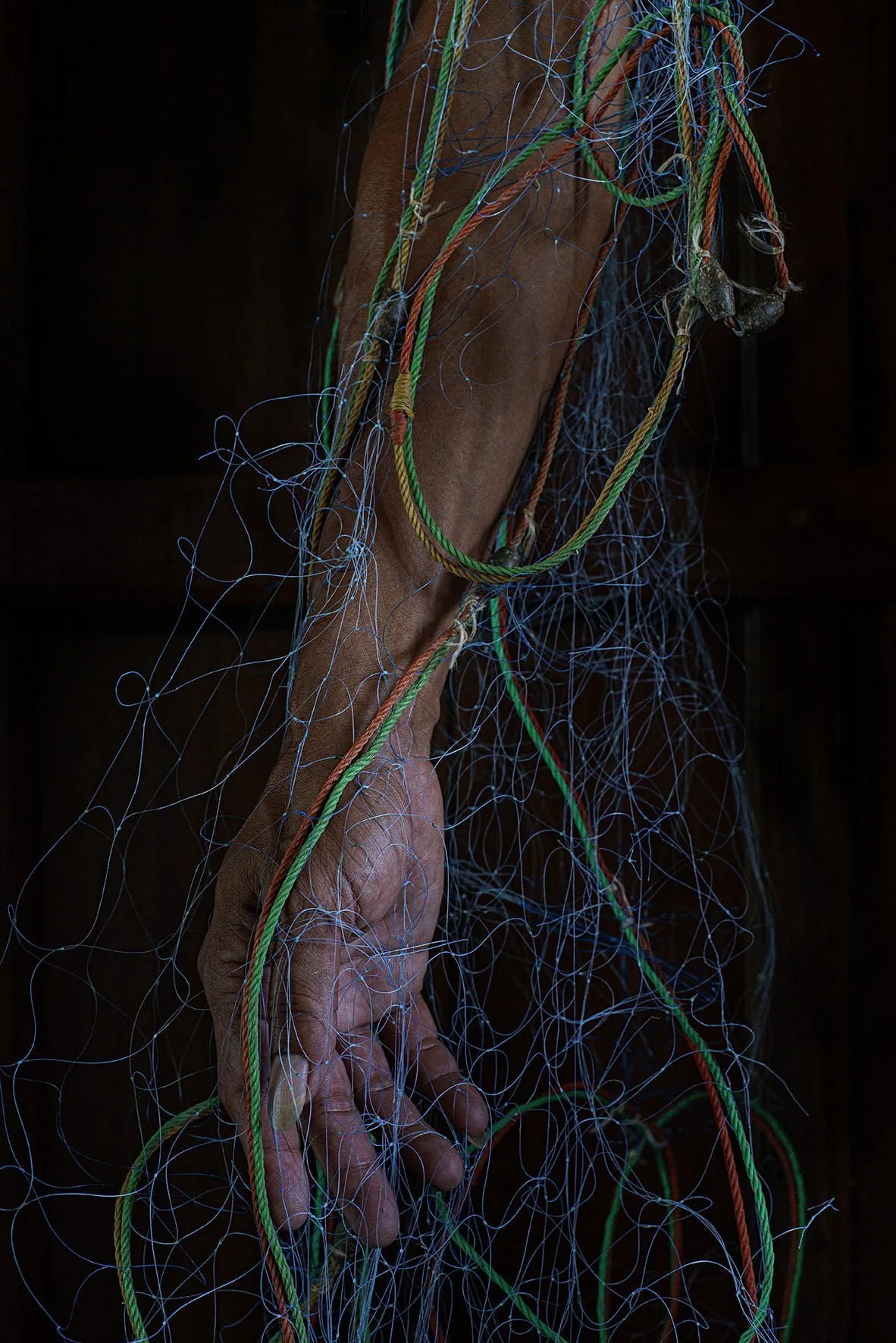
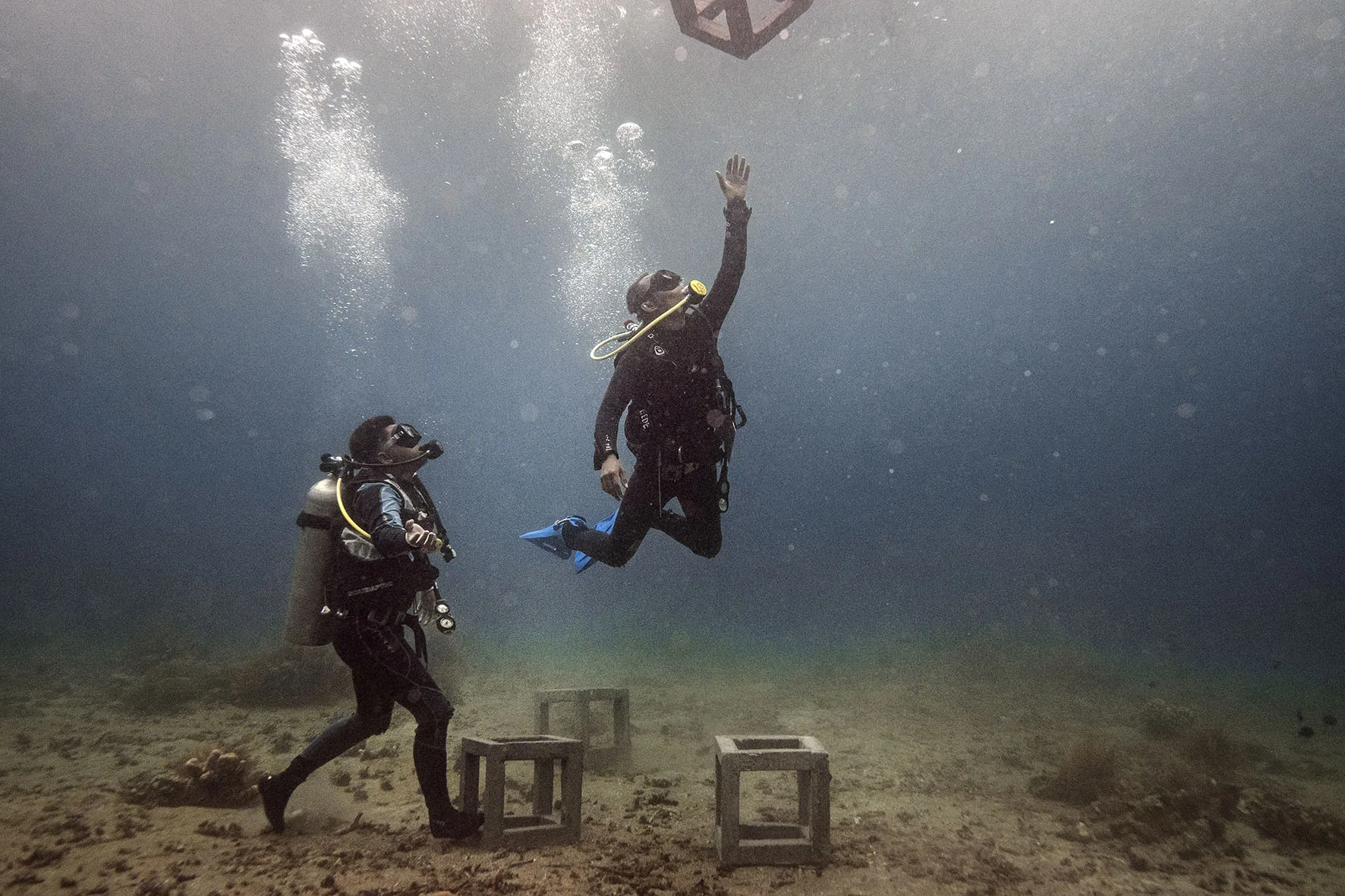
Divers deploy concrete structures in a new coral restoration site in Jemeluk, on the Indonesian island of Bali. After damage to the reef from unsustainable fishing practices, local NGO Perkumpulan Pemandu Penyelam Amed (or P3A) is working with Balinese divers committed to marine conservation. These artificial structures have been seeded with coral larvae and offer a refuge area for different fauna, helping to restore this once thriving reef.
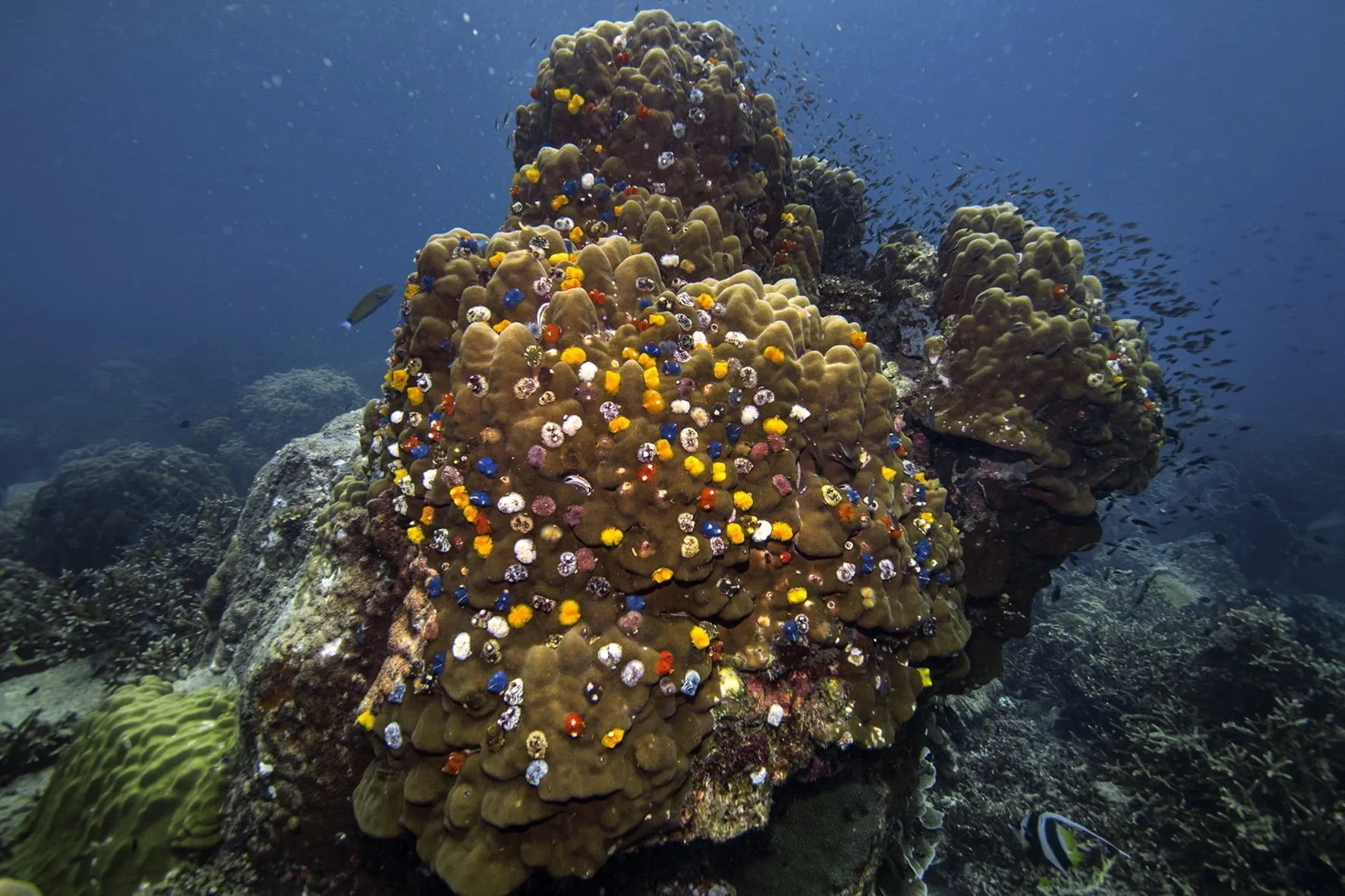
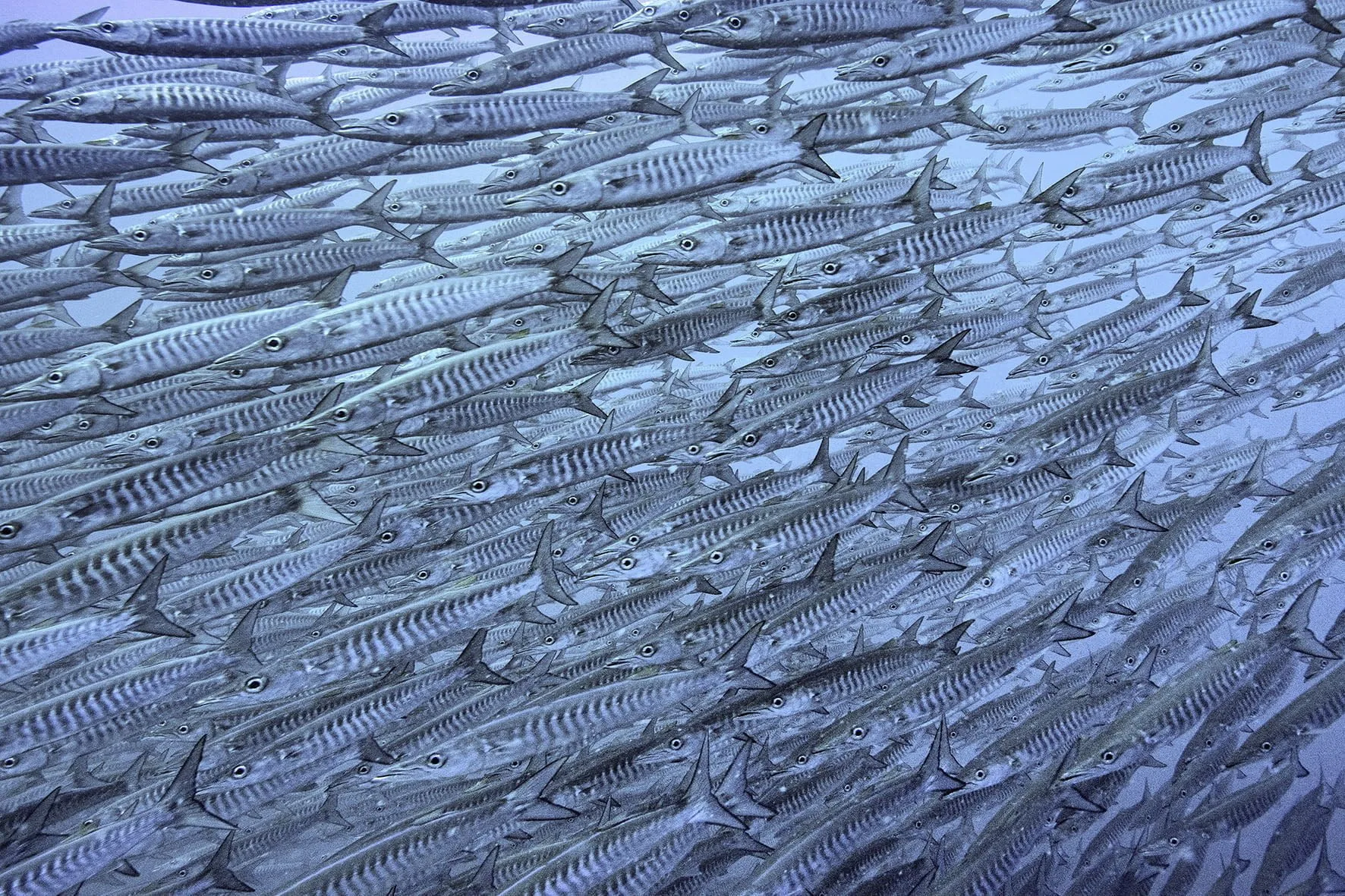
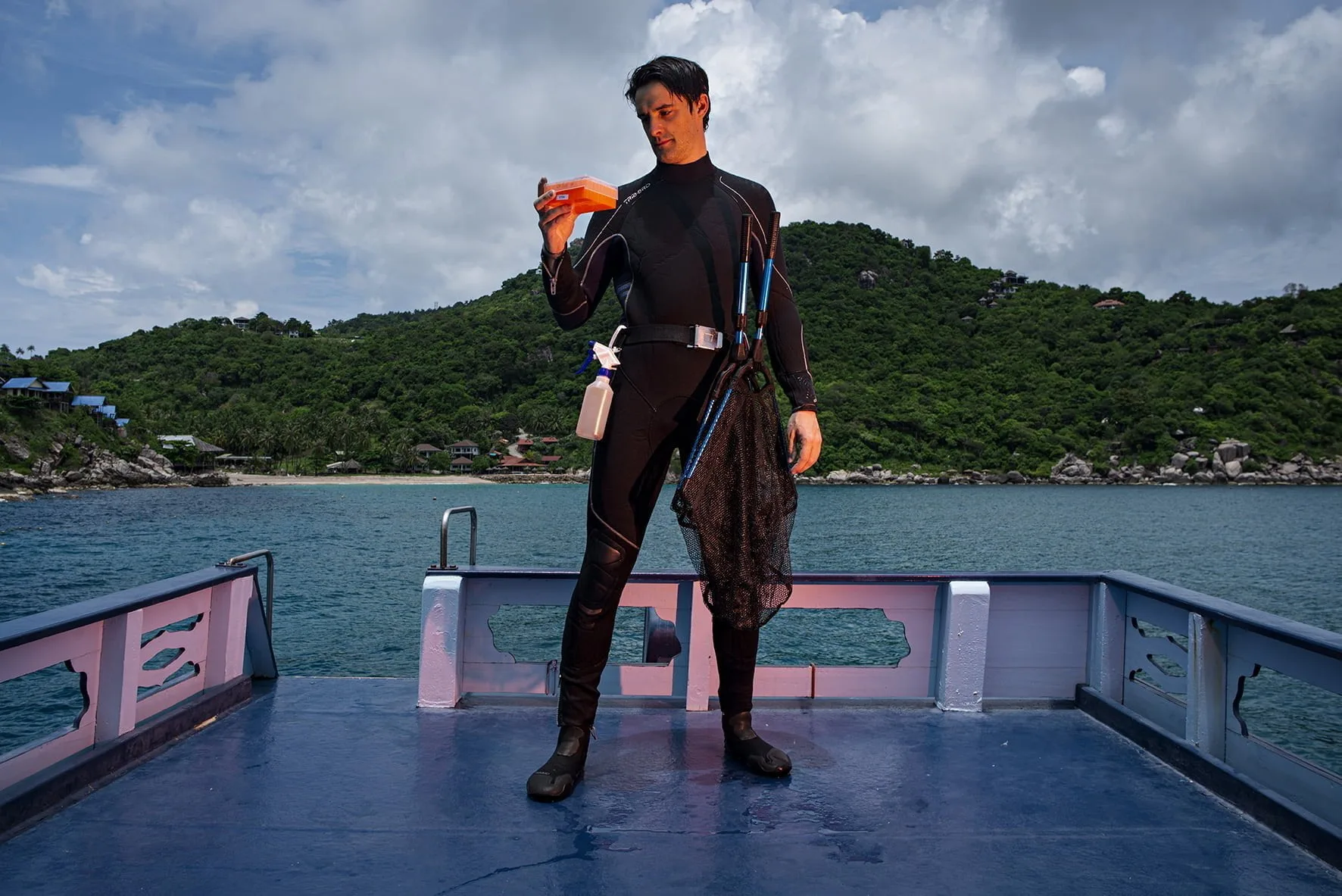
Théo Gaboriau, researcher at the University of Lausanne, holds samples of clownfish fins taken during a dive. The clownfish and sea anemone are closely interlinked in the ecosystem. Changes affecting one species will affect the other species, triggering a chain reaction that can go on to affect multiple species.
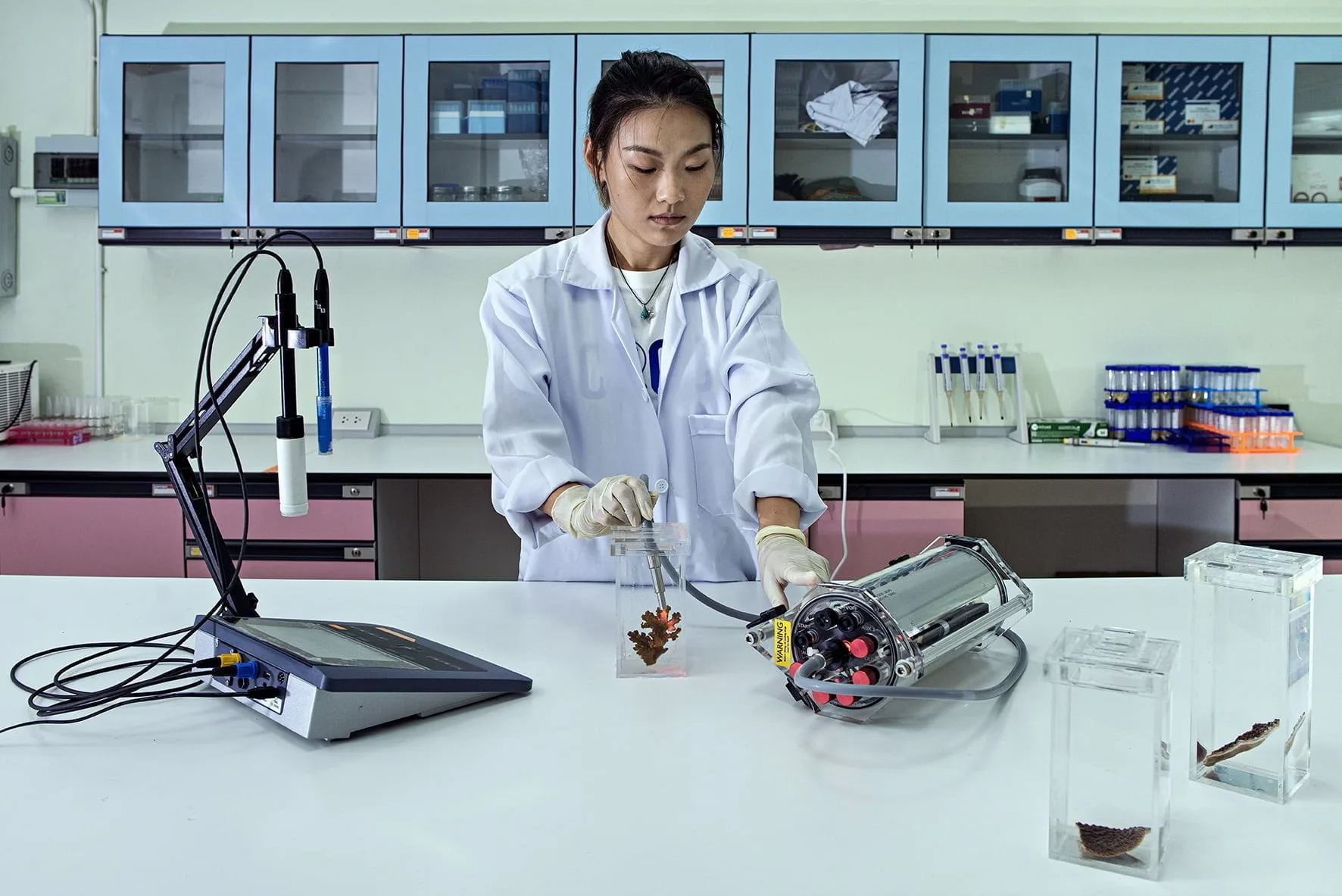
Ph.D student Long Ying studying a coral sample collected in Koh Kham, Thailand. Coral is an excellent example of symbiosis. Many coral species have unicellular algae called zooxanthellae living in their tissues. This algae is able to provide the coral with nutrients through photosynthesis. Most of the organic material produced by the algae is transferred to the host coral, helping them to grow and build entire reefs.

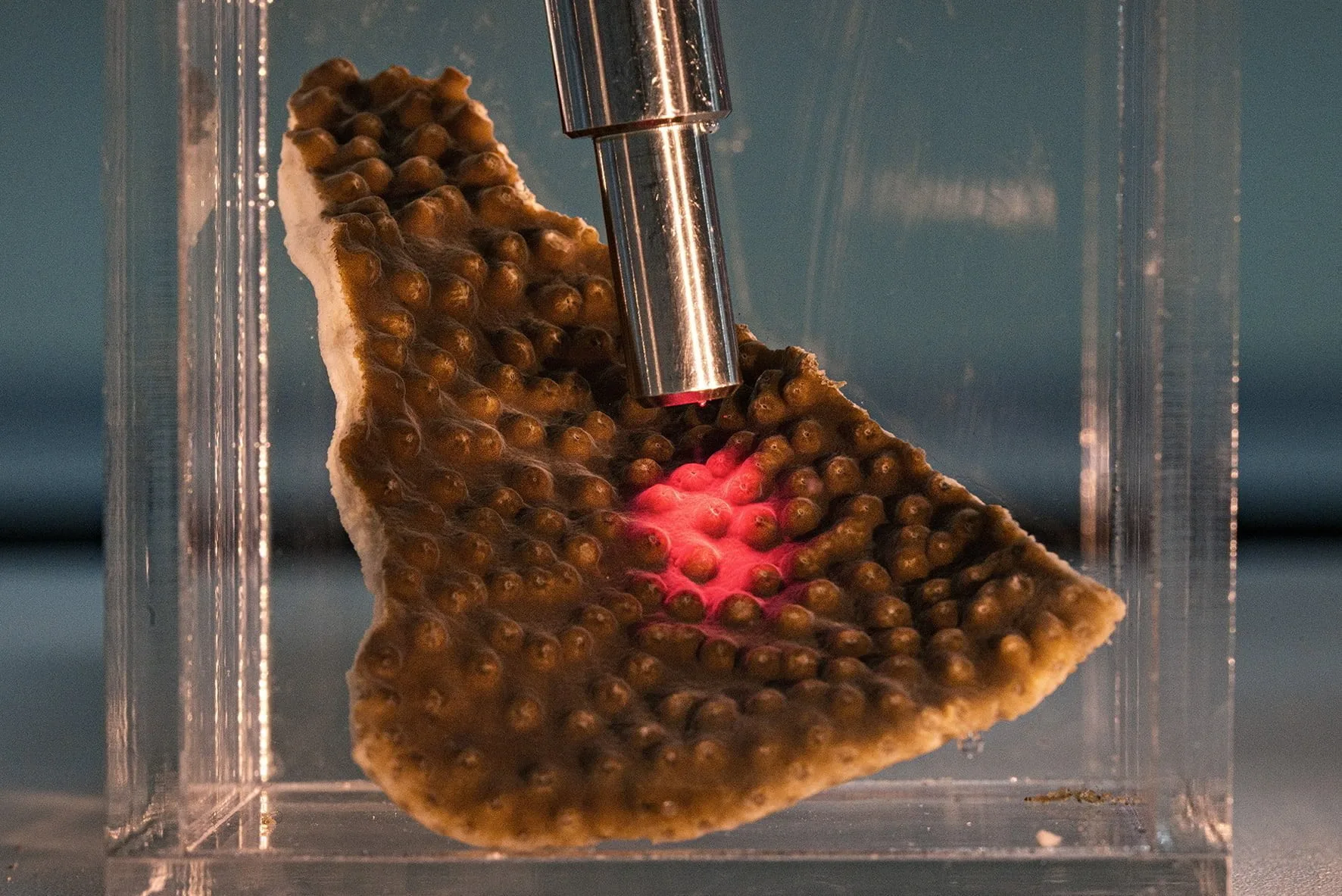
The coral provides the algae with a protected environment and the compounds they need for photosynthesis. When coral experiences heat stress, it can expel the algae, and the coral turns ghostly white. This is called ‘coral bleaching’ and can lead to the death of the coral colony.

In Demak, on the Indonesian island of Java, the coastline faces severe erosion. Mangroves that protected the shore have been cut down and replaced by aquaculture ponds. At the same time, subsidence is increasing due to groundwater extraction for domestic and industrial. uses. This has left the community exposed to daily tides and extreme weather events occurring more frequently due to climate change. The sea here has penetrated about one kilometre inland.
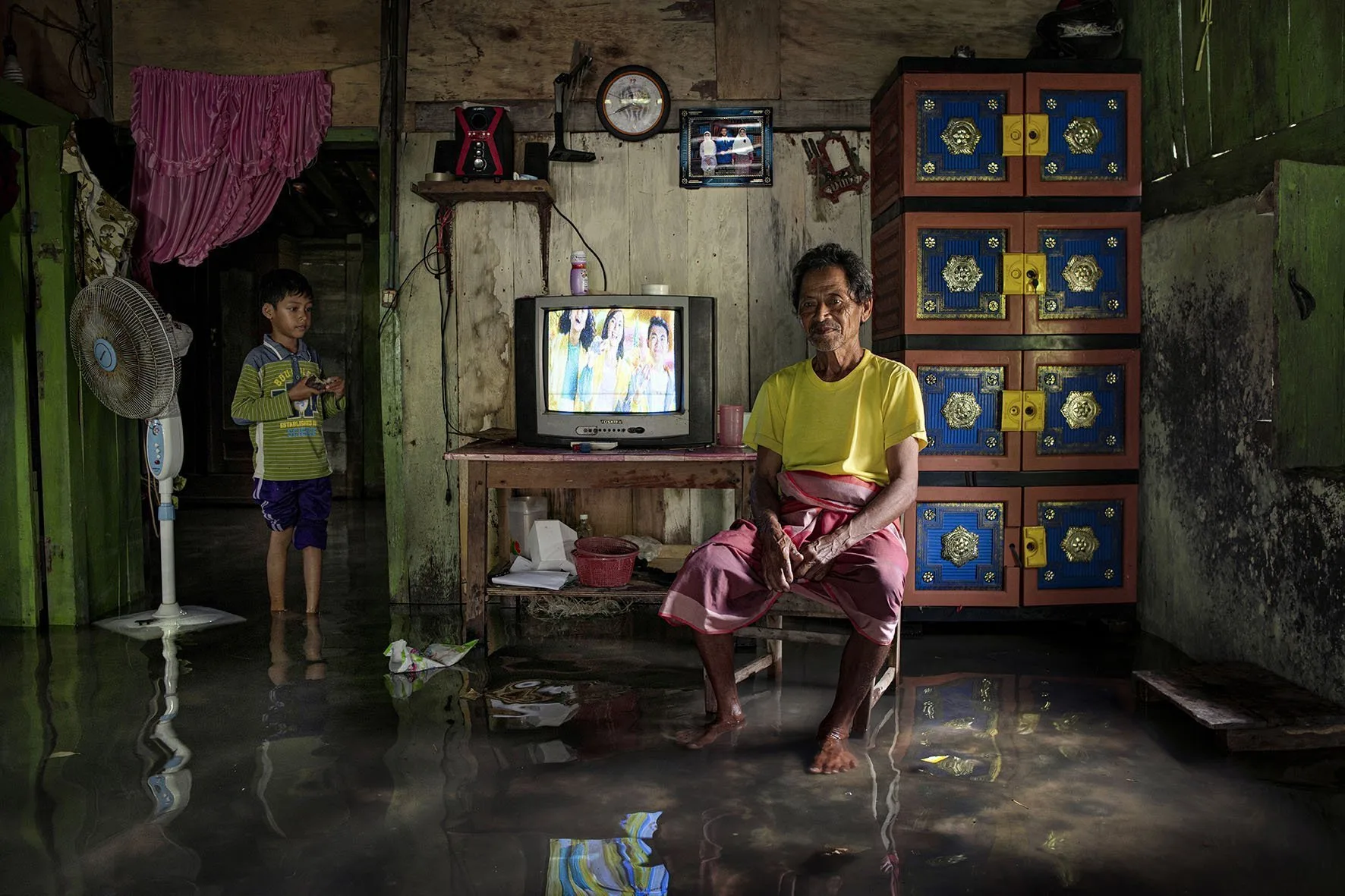
Abdul Latief has been working as a fisherman on the Indonesian island of Java for 37 years. Since the sea has penetrated inland, the wind is getting stronger and fish are harder to find. Nowadays he spends more money on boat fuel than he is able to earn from fishing. His house flooded for the first time in 2008 and since then he has already had to elevate his house twice. Today floods are getting higher but Abdul doesn’t have enough money to elevate his house again. His family wants to move inland but for Abdul, now aged 62, fishing is his life.


Land loss on Java has been reduced thanks to the mangrove restoration projects undertaken in the last few years. Thanks to this, household incomes have tripled and communities are taking action to address coastal erosion. But to ensure long-term success, alternative water supplies are needed so groundwater can be protected. Depending on the species, the mangrove can be fully grown in less than two years after planting. Mangroves are also powerful carbon sinks, while also providing a natural habitat for many species.
